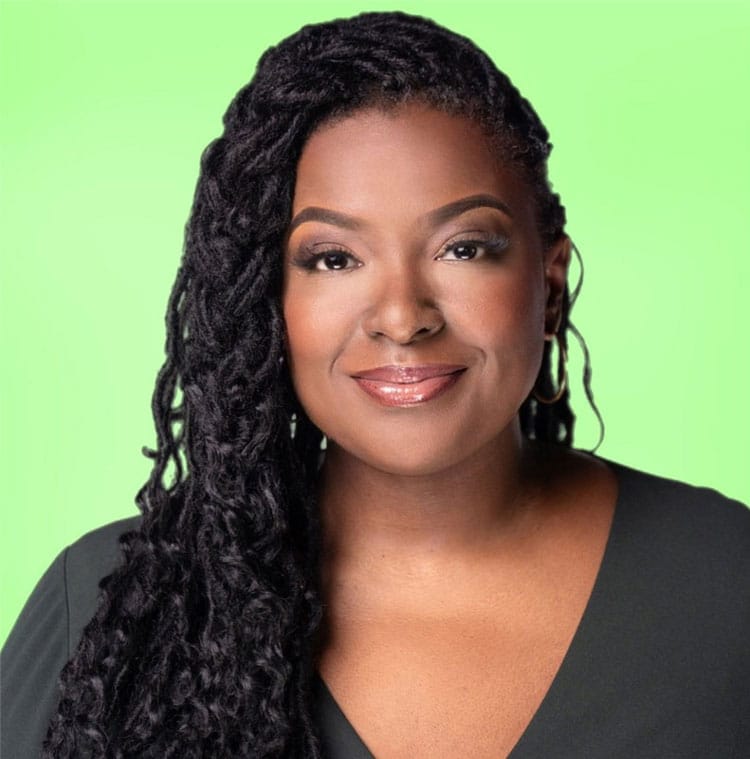Listen to Your Employees to Achieve DE&I Goals

“Why is it that some organizations excel in Diversity, Equity, and Inclusion (DE&I) while others falter?” This provocative question sets the stage for a deep dive into the world of DE&I, based on my enlightening interview with Michelle Marshall, the head of Diversity, Equity, and Inclusion at PUMA North America. In our conversation, Marshall reveals critical insights and strategies that PUMA employs, offering a roadmap for other organizations striving to enhance their DE&I initiatives.
Engagement: The Heart of DE&I Strategies
PUMA’s approach to DE&I is deeply rooted in engagement, which Marshall identifies as crucial. This engagement is not a one-off event but rather a continuous process that involves employees at every level. PUMA regularly uses focus groups, holds listening sessions, and issues belonging surveys to understand the diverse experiences of its workforce. These tools allow the brand to gather in-depth insights into the needs and experiences of its employees, especially those from underrepresented groups. By doing this, PUMA ensures that its strategies are not just theoretical frameworks but practical, actionable plans that address everyone’s specific concerns and aspirations.
Furthermore, PUMA’s strategy extends beyond the engagement of internal stakeholders to include customer feedback. Doing so, acknowledges the important role that external perceptions and customer expectations play in shaping not only an organization’s reputation but its DE&I policies. As different generations have unique perspectives and expectations from brands – specifically Generation Z and their prioritization of sustainable brands – generational insight is increasingly important to continue adapting to industry and global shifts. By regularly listening to customers, PUMA aligns its DE&I strategies with market demands, ensuring relevance and responsiveness to societal trends and values. This dual focus on both internal and external engagement creates a comprehensive approach that is both inward and outward-looking — which is crucial for a global brand like PUMA.
The Pitfalls to Avoid
Marshall’s insights into the pitfalls of DE&I strategies highlight the importance of cultural readiness. This concept revolves around the idea that simply increasing diversity through recruitment is insufficient. To be successful, organizations need to create an environment where diversity is not just tolerated but celebrated and nurtured. A culture unprepared to embrace diversity can not only lead to a toxic workplace environment but also affect employee retention and satisfaction. This revolving door syndrome, where diverse talent leaves as quickly as they join, can be detrimental to an organization’s morale and its DE&I aspirations.
Marshall’s perspective on this is refreshingly realistic, acknowledging that each organization’s DE&I journey is unique. There’s no one-size-fits-all solution; DE&I must extend beyond just being a hot topic or trend. Rather, it serves as a commitment to incorporate these values into an organization’s fabric and enhance cultures so that all employees can thrive. Her emphasis on culture readiness suggests a proactive approach, where organizations first lay the groundwork of an inclusive culture before embarking on ambitious diversity recruitment efforts. It’s not just about checking a box during recruitment; it’s about ensuring that diverse employees enter a space where they feel genuinely welcome and valued, not just as a token of diversity. All employees are and should feel like integral members of the organizational family.
Consistency and Communication – The Backbone of DE&I Success
Many organizations underscore the significance of consistent messaging and communication in DE&I efforts. It’s not merely about setting ambitious DE&I goals; it’s about keeping them in the consciousness of every employee through regular updates and open communication. This transparency is vital in building trust and ensuring that every member of the organization is aligned with the DE&I objectives – especially at larger brands where there may be fewer one-on-one touchpoints with senior leadership.
Moreover, communication is not just about conveying information; it’s about creating an open dialogue where feedback is encouraged, and diverse perspectives are heard. This two-way communication fosters a sense of ownership among employees, making DE&I a collective responsibility rather than a top-down mandate. By maintaining this level of communication, organizations can adapt and evolve their DE&I strategies in response to changing dynamics within and outside the organization – as we discussed above – ensuring that their DE&I efforts are always relevant and effective.
Accountability Through Measurable Goals
Marshall’s emphasis on accountability through measurable DE&I goals is a pivotal aspect of PUMA’s strategy. This approach involves quantifying objectives in DE&I, making them as integral to business operations as financial targets or product development milestones are. By embedding DE&I goals into the core objectives of leadership it ensures that DE&I efforts are taken seriously and are not just performative or symbolic gestures.
Such measurable goals might include specific targets for hiring from diverse backgrounds, retention rates of underrepresented groups, or benchmarks for inclusive leadership practices. By making these goals quantifiable, PUMA holds its leaders accountable, ensuring that DE&I is not just a topic of discussion or a “nice to have” but a tangible aspect of business performance.
Leadership and DE&I: A Crucial Nexus
After years of pushing the needle forward with DE&I, PUMA has found that one of the biggest ways to drive meaningful change is through full organization and C-suite level involvement. This responsibility falls to everyone at PUMA, not just any one person or department. This involvement goes beyond mere endorsement or support; it requires leaders to actively engage in activities like employee resource group events and DE&I training. Such participation is crucial as it sends a strong message throughout the organization about the value placed on DE&I.
Leaders embodying inclusive practices in their daily interactions are vital for creating a culture where DE&I principles are lived and breathed. When leaders model inclusive behavior, it sets a tone and standard for the entire organization, encouraging all employees to follow suit. This top-down approach to practicing inclusivity helps embed these values into the organizational culture. Additionally, with widespread involvement, DE&I strategies are more fruitful and can generate long-term momentum rather than only pushing efforts around key moments in time, like during Pride Month.
Addressing the Mentorship and Sponsorship Gap
While mentorship provides guidance and advice, sponsorship involves actively advocating for individuals, particularly in crucial decision-making scenarios. PUMA’s ongoing strategy to bridge this gap by integrating employee resource groups with leadership development programs is innovative. It ensures that underrepresented groups are not only advised but also actively championed. This approach increases their visibility and provides real opportunities for career advancement, breaking down barriers that often impede the progress of marginalized groups.
The Future of DE&I at PUMA
Marshall’s enthusiasm about the future of DE&I at PUMA underscores a continued forward-thinking and proactive approach. PUMA has created multiple company-led initiatives and groups throughout the years and partnered with outside resources to help lead the industry toward DE&I acceptance. Some of the internal groups include ERGs, such as PUMA’s Association of Women, BBOLD, pumALLiance, and ROAR. The expansion of employee resource groups and partnerships with institutions like Clark Atlanta University – where last year, PUMA committed to a five-year partnership that includes a $1 million scholarship fund, mentorship, marketing activations, and learning opportunities to build students’ awareness of roles in the sneaker industry – represents a strategic effort to foster diversity and inclusion not just within the brand but in the broader community.
PUMA’s focus on authenticity in its marketplace presence – ensuring that its products and campaigns resonate with diverse audiences – is a significant step in recognizing the importance of representation in all facets of business operations. This holistic approach to DE&I, encompassing internal and external strategies, sets a blueprint for how companies can integrate DE&I into every aspect of their business.
PUMA’s DE&I strategy, as elucidated by Michelle Marshall, provides a comprehensive model for organizations seeking to enhance their DE&I efforts. The key lies in genuine employee engagement, leadership accountability, consistent communication, and a data-driven approach to address bias. By following these principles, companies can create an inclusive environment where diverse talent not only joins but thrives, driving the organization toward greater success and innovation.
Written by Dr. Gleb Tsipursky.
Have you read?
23 of the Biggest Wars in Human History.
Movies that Catapulted Hollywood Icons.
Countries with the Most American Military Bases.
Countries With The Most Main Battle Tanks Today.
Silver Screen Disasters: Epic Failures in Hollywood.
Bring the best of the CEOWORLD magazine's global journalism to audiences in the United States and around the world. - Add CEOWORLD magazine to your Google News feed.
Follow CEOWORLD magazine headlines on: Google News, LinkedIn, Twitter, and Facebook.
Copyright 2025 The CEOWORLD magazine. All rights reserved. This material (and any extract from it) must not be copied, redistributed or placed on any website, without CEOWORLD magazine' prior written consent. For media queries, please contact: info@ceoworld.biz











